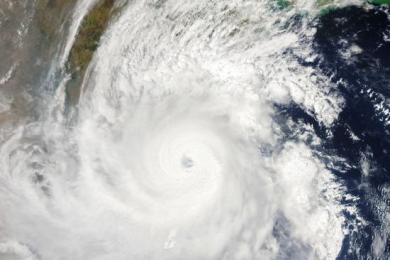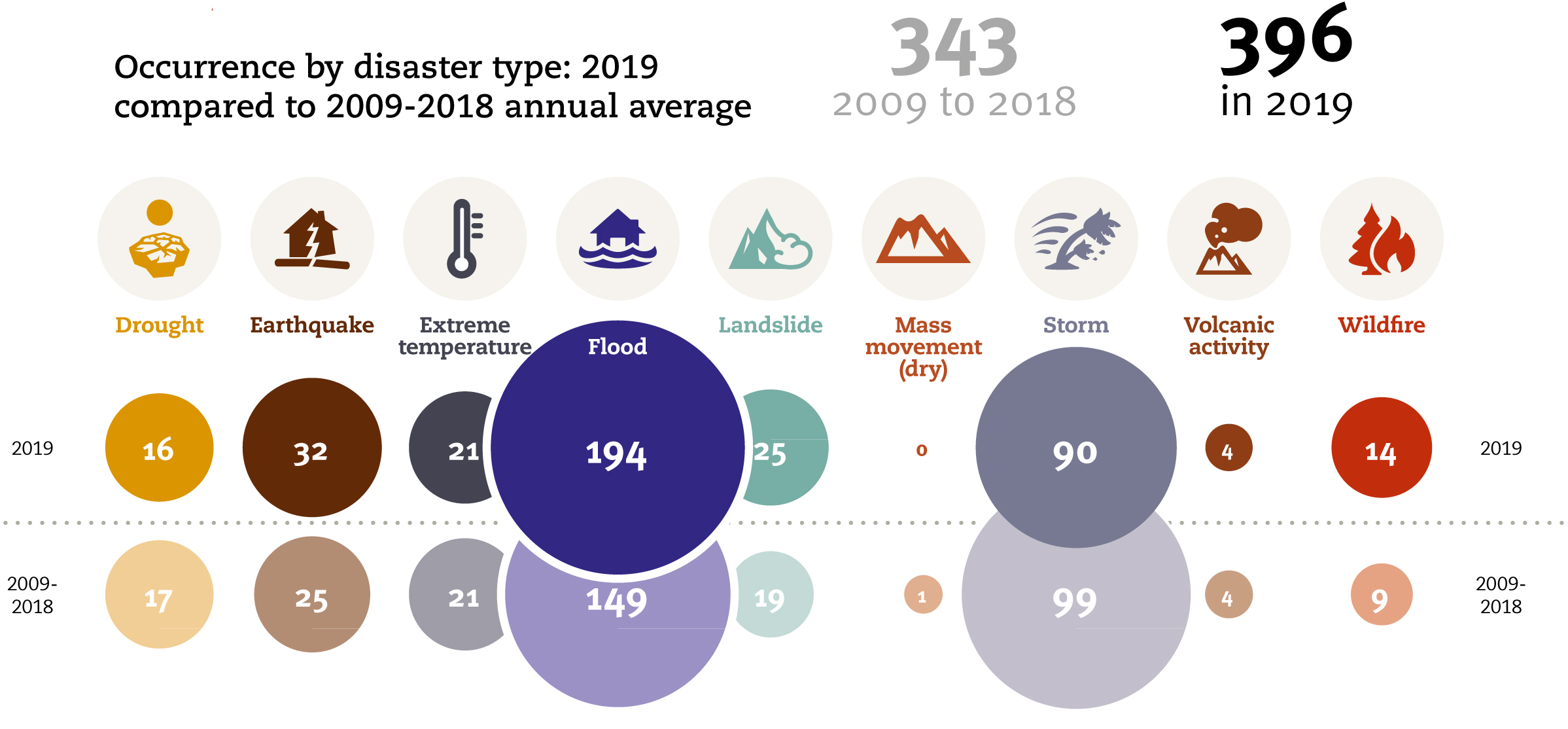According to the latest issue of an annual disaster statistics report, floods were the deadliest type of disasters in 2019, followed by extreme temperature, while storms affected the highest number of people. Published by the Centre for Research on the Epidemiology of Disasters (CRED), “Natural disasters 2019 - Now is the time to not give up” draws on data recorded in the Emergency Events Database (EM-DAT), which saw the addition of 396 disasters that affected a total of 95 million and caused $103 billion in economic losses around the world.
Accounting for 40 per cent of disaster events, Asia suffered the highest impact with 45 per cent of deaths and 74 per cent of total affected. India, which saw cyclone Fani cause destruction in 2019, was the country most affected in terms of number of deaths and people affected.
As in previous years, floods continue to represent the disaster type with the highest occurrence, constituting nearly half of all disaster events recorded in the database. Floods and storms, of which the impact of cyclones Idai and Kenneth in Mozambique and of hurricane Dorian in the United States and the Bahamas stood out, affected almost 64 million people worldwide.
Figure: Occurence by disaster type 2019. Image: CRED.
Ranked the second hottest year on record, heat waves also affected a high number of people in 2019, while large, severe and long-lasting wildfires, for instance from September 2019 to February 2020 in Australia, caused a total damage and economic cost of around $30 billion.
Compared to the average of the previous decade (2009-2018), 2019 saw more disaster events with fewer deaths, fewer people affected and less economic loss. According to the report, this is due to the absence of a large disaster event.
The publication only includes “natural” disasters. For a disaster to be recorded in EM-DAT, it needs to meet the following criteria:
10 or more people reported killed
100 or more people reported affected
Declaration of a state of emergency
Call for international assistance
CRED provides free access to the full EM-DAT system for non-commercial purposes through the EM-DAT query tool.


